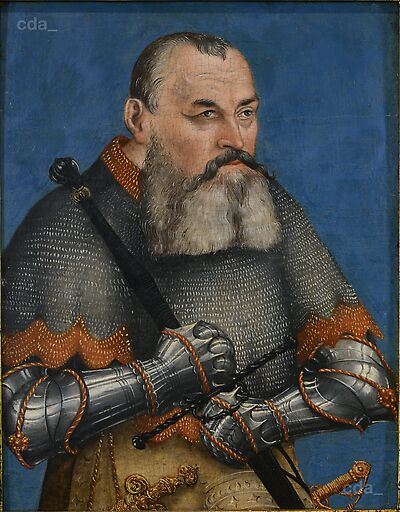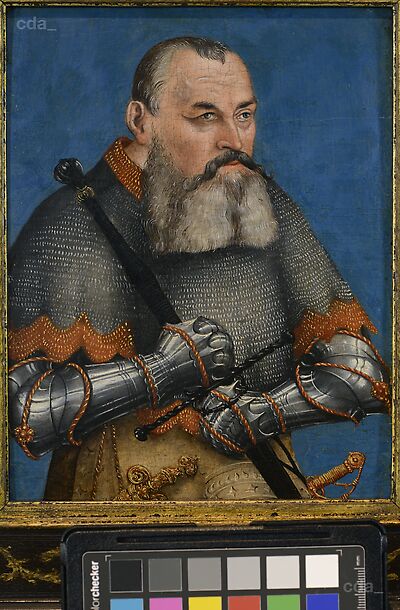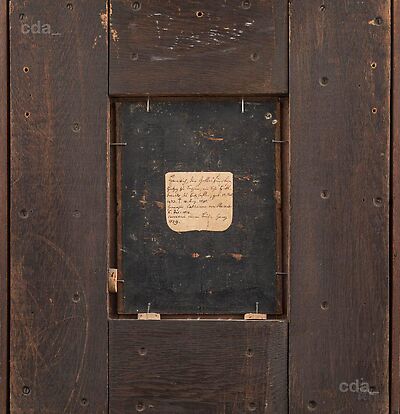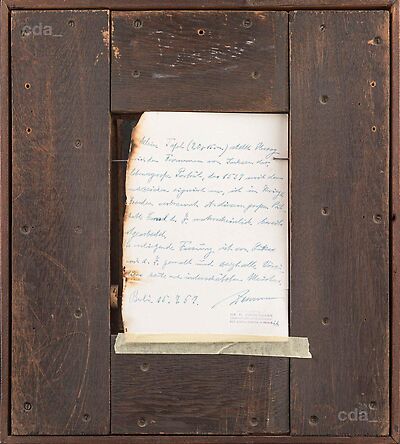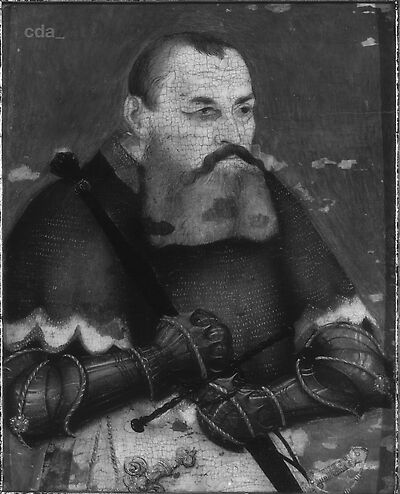- Attributions
-
Lucas Cranach the Elder and workshop
Workshop Lucas Cranach the Elder
Attributions
| Lucas Cranach the Elder and workshop | [Heydenreich, unveröffentlichter Untersuchungsbericht, 26.11.2023] |
| Workshop Lucas Cranach the Elder | [cda 2020] [Roland Enke, expertise 2019, PRIVATE_NONE-P322_FR-none_2019_Report.pdf] |
| Lucas Cranach the Elder | [Christie's online, accessed 03.04.2024] |
| Lucas Cranach the Younger | [Dr. Heinrich Zimmermann, Director of the Gemäldegalerie, Berlin, expertise 15.07.1957] |
- Production dates
- after 1537
about 1537 - 1550
Production dates
| after 1537 | [Heydenreich, unpublished examination report, 26.11.2023] |
| about 1537 - 1550 | [Roland Enke, expertise 2019, PRIVATE_NONE-P322_FR-none_2019_Report.pdf] |
- Dimensions
- Dimensions of support: 20 x 15 cm
Dimensions
Dimensions of support: 20 x 15 cm
[Roland Enke, expertise 2019, PRIVATE_NONE-P322_FR-none_2019_Report.pdf]
- Signature / Dating
none
- Inscriptions and Labels
Reverse:
old paper label, roughly cut in the shape of a shield (end of the 18th century?): 'Heinrich, der …Inscriptions and Labels
Stamps, Seals, Labels:
Reverse:
old paper label, roughly cut in the shape of a shield (end of the 18th century?): 'Heinrich, der Gottesfürchtige, Herzog zu Sachsen, ein Sohn H.(erzog) Albrechts des [Beherzten?], geb. 17. Martius (=März) 1473, + 18. Aug. 1541. Gemahlin Catharina von Meclenb: 6: Juli 1512. Succedierte seinem Bruder Georg 1539.'
Noted on the reverse of a b/w photograph (with the painting on the recto; burn marks on the left edge) a brief handwritten expertise by Dr. Heinrich Zimmermann, Director of the Gemäldegalerie, Berlin, dated 15.07.1957:
'[Die] kleine Tafel (20 x 15 cm) stellt Herzog [Hei-] nrich den Frommen von Sachsen dar. [Das] lebensgroße Porträt, das 1537 mit dem [Cra-] nachzeichen signiert war, ist im Kriege [in] Dresden verbrannt. An diesem großen Bil- [de] hatte Cranach d. J. wahrscheinlich bereits [m-] itgearbeitet. [D]-ie vorliegende Fassung ist von Lukas [Cra-] nach d. J. gemalt und zeigt alle Vorzü- [ge] dieses heute noch unterschätzten Meisters. Berlin 15.7.1957 Zimmermann' with an official stamp.
[Roland Enke, expertise 2019, PRIVATE_NONE-P322_FR-none_2019_Report.pdf]
- Owner
- Private Collection
- Repository
- Private Collection
- CDA ID
- PRIVATE_NONE-P322
- FR (1978) Nr.
- FR-none
- Persistent Link
- https://lucascranach.org/en/PRIVATE_NONE-P322/
